Uzbekistan: Katta Ej Ruins
Ўзбекистон: Катта Эж
The Katta Ej Ruins trek combines a bit of easy hiking in Uzbekistan with the fascinating ruins of an abandoned village and several groupings of petroglyphs nearby, all in an easy one- to two-hour walk.
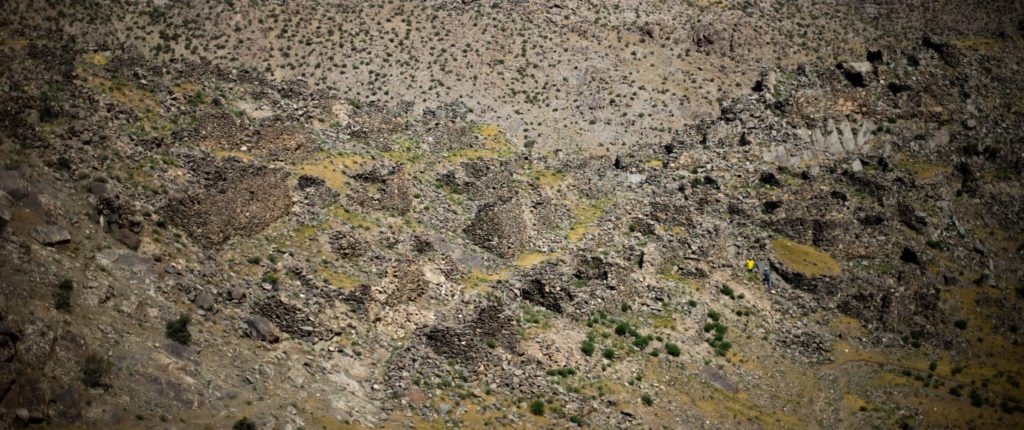
Total Km: 8km
Total Days: 1
Elevation Gain/Loss: 179m+ / 179m-
Start Point: Katta Ej Village
End Point: Katta Ej Village
GPS Files
This casual walk explores the modern village of Katta Ej and the ruined old village just above, as well as the arid canyon that contains the old village and connects the two. It’s a good example of the rugged lifestyles that define much of the Nuratau region, with locals working hard to make a living from the little arable land available.
The trail starts near the center of the village, where several of the local roads intersect. Follow the road in a generally westerly direction past stone-walled local houses and fields flush with produce, trying to make time to stop and chat along the way if any villagers approach (tourists are something of a rarity in Katta Ej, compared to other Nuratau hiking destinations).
After following the village road for around two and a half kilometers, crossing the stream once or twice and wandering through any back roads that take your fancy, look for a small arid valley that cuts up to the northwest.
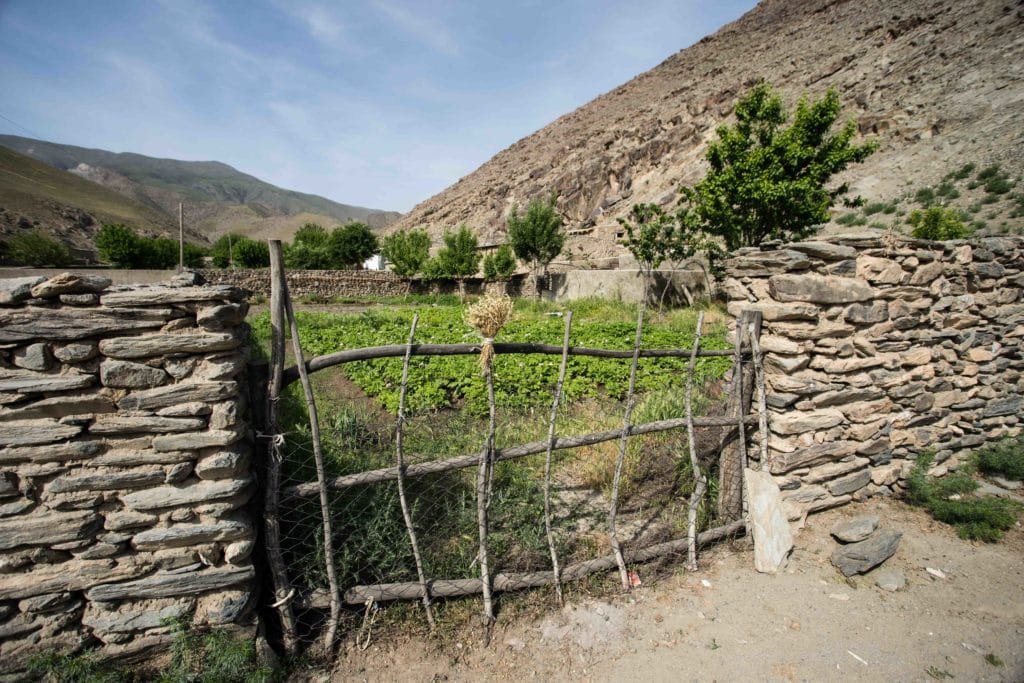
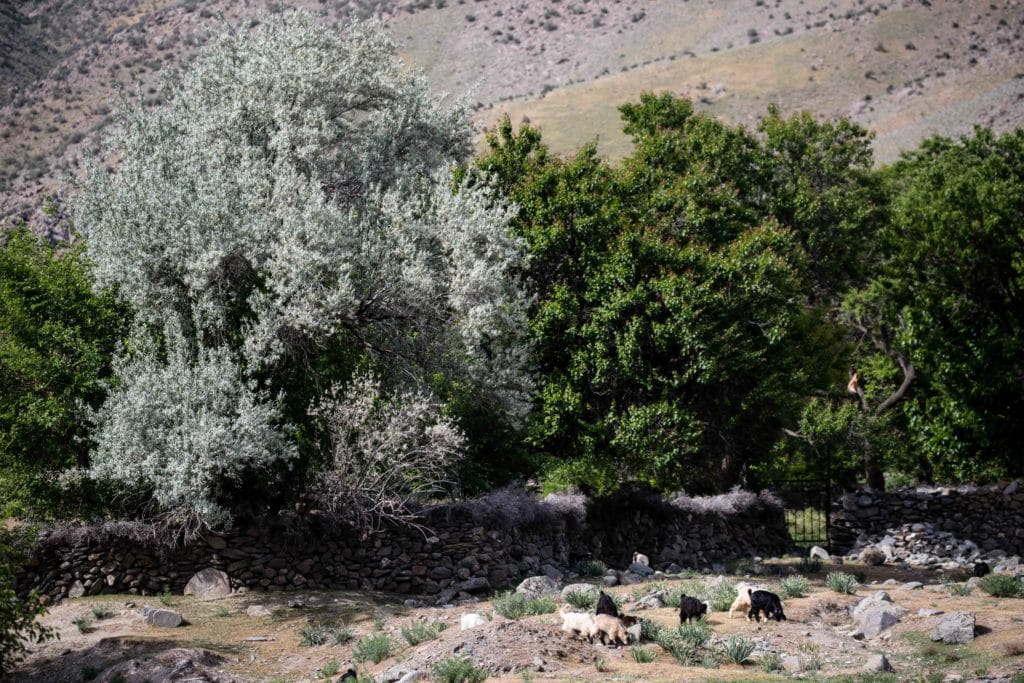
The trail climbs every so slightly as it leaves the last few houses, rising up a small hillside for about 300 lateral meters before the next turnoff. At that point, it should be possible to see the ruins of the older village of Katta Ej up a small side valley to the south – turn into the small valley.
While it’s possible to follow the dry river bed directly to the base of these ruins, for a better view of the whole complex up gently along the rise to the east of the bed. If it wasn’t already apparent, you’ll see from the top that the complex is actually quite large, spread out over several hillside and obviously built both to last and for defensive purposes.
Katta Ej, as many of the villages in the region, previously existed as a small stone village tucked away here in an unprepossessing side valley primarily for safety – most of these villages have existed for centuries, when marauding attackers weren’t unknown. According to locals, they were largely abandoned during either the Imperial period or during Soviet-era collectivisation, and even those who later moved back elected to live at lower elevations in the more modern structures you’ll have passed on the way here.
Climb up into the old ruins, paying attention for snakes and other critters, and keep an eye out for the last standing arch of the old mosque on the northernmost hilltop. It’s all a fascinating bit of history, especially when compared to the heavy restoration popular in other of Uzbekistan’s historical sites.
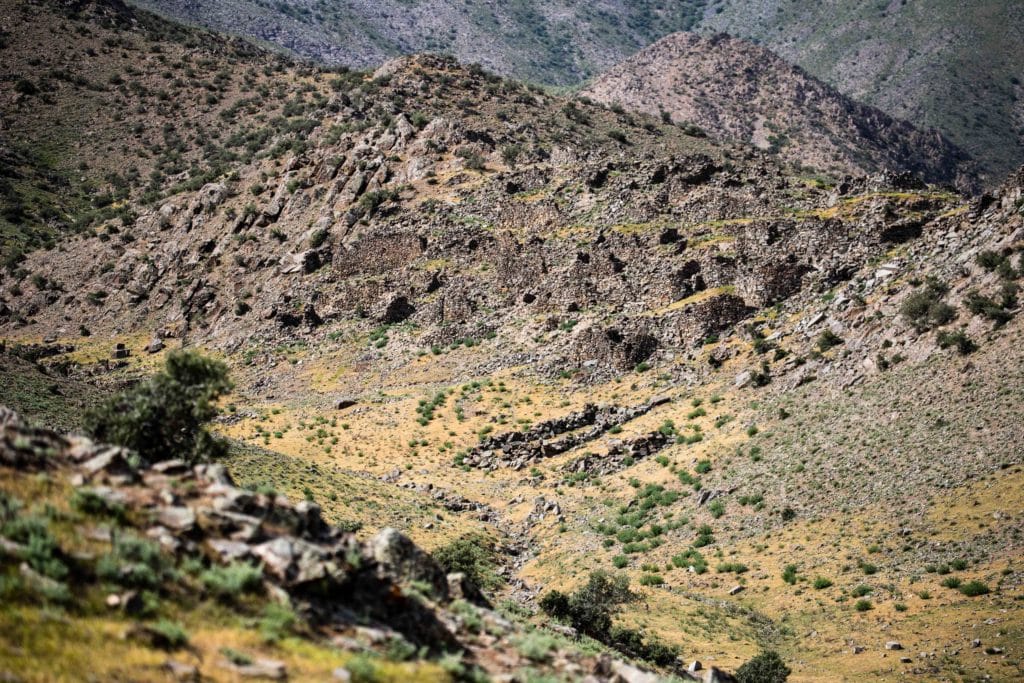
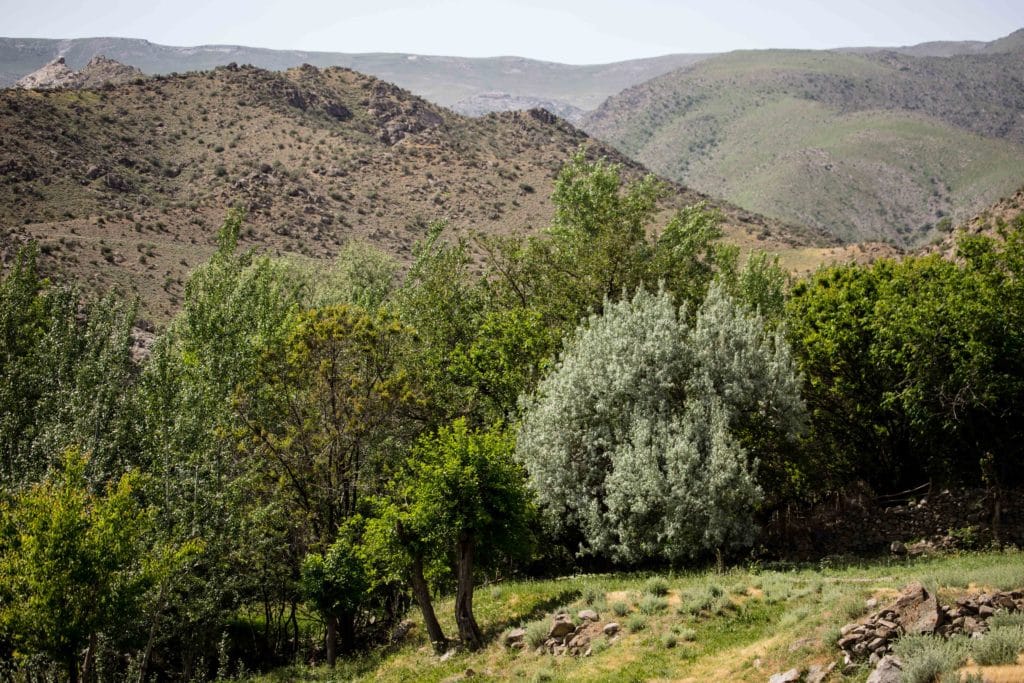
After you’ve finished exploring the old ruins, loop down to the southwest around the top of the stand of trees fed by the small stream here. Just on the far side is the area’s most accessible petroglyph site – locals don’t seem to have any historical context for these, and we’re not aware of any proper academic research or documentation that has been down, though tour guides suggest that these date to the Bronze Age.
Walk northwards from here, looking for other small carvings in the surrounding rocks, until a point where it’s obviously possible to cross the stone fenceworks separating the trail from the planted land and stream. Cutting across the greenery to a small spring (with fresh water, though you still may want to treat it!) and then up to the obvious rock carvings just to the north – the next-largest in the area.
Once you’re satisfied with the petroglyphs, follow the stream northeast to where the trail rejoins the original route we arrived by, and continue on for the rest of the 3.5km back to the starting point of the trek.
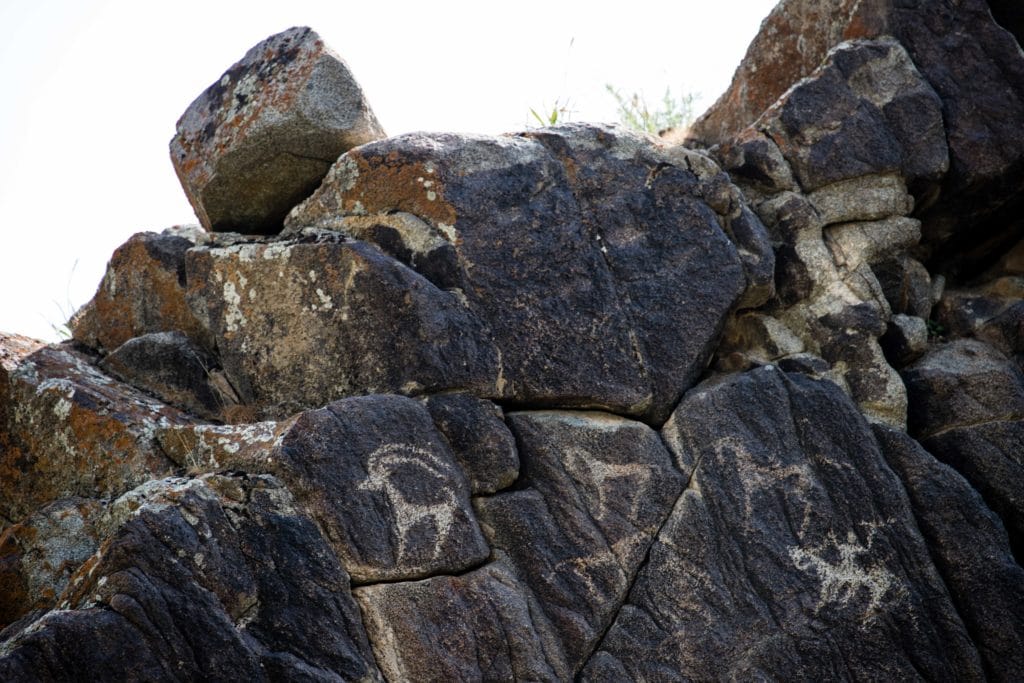
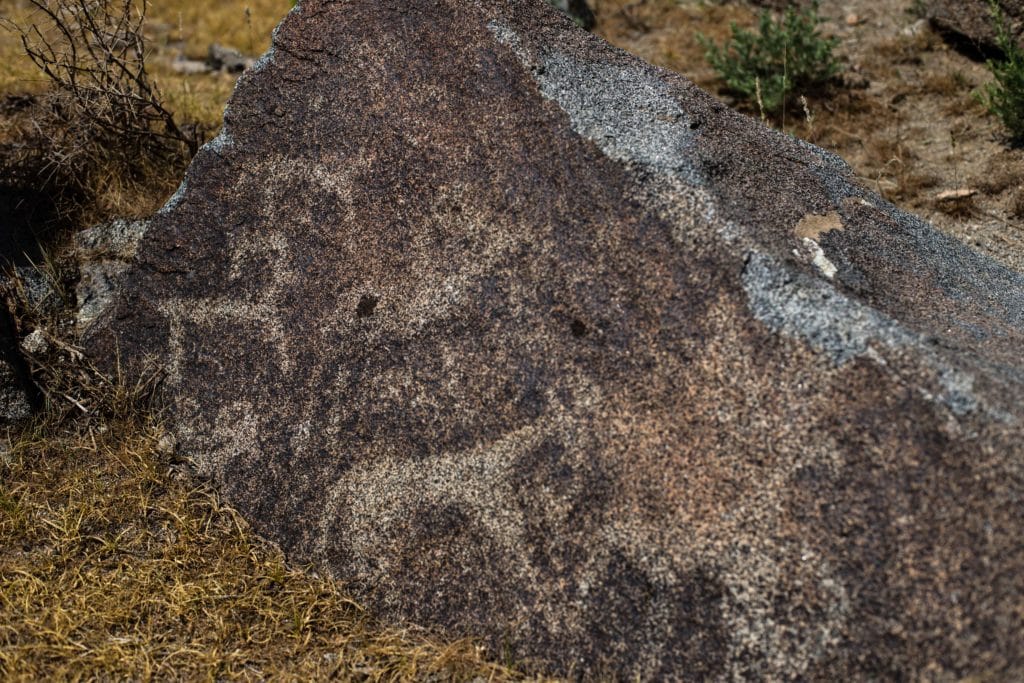
Good To Know
There are no entrance fees to the Katta Ej Ruins and no special equipment necessary – though it can get quite hot and sunny even in late spring so be sure to pack a hat and sunscreen. Water is available from a small stream at the beginning of the hike in the village, but given the amount of people and livestock in the region you’ll absolutely want to bring a purification system if you plan to rely on this water.
We traveled throughout the region with Ruslan of Nurata Tours, and were happy with the service and prices. Our friend Shivya of The Shooting Star visited the Nuratau region with Responsible Tourism, another local operator, and also reported being pleased with the experience.
Getting to the Katta Ej Ruins
Getting to Katta Ej on public transport is time-consuming – most visitors would be best off visiting with a local tour operator to combine the village with others in the Nuratau region. If you really insist, there’s a petrol station just at the turn off the main desert highway where with luck you may be able to flag down a ride.
Where to Stay and Eat
A small shop at the center of the village sells very basic foodstuffs, but a better idea is to come prepared with what you need for the day. There does appear to be one guesthouse in Katta Ej, but most visitors will end up visiting en route to or from nearby Sentob, where there are considerably more options. Along the trekking route, where the trail turns out of the village to climb the hillside, a local family noted that they were also open to hosting guests – inquire if you do need somewhere to spend the night.

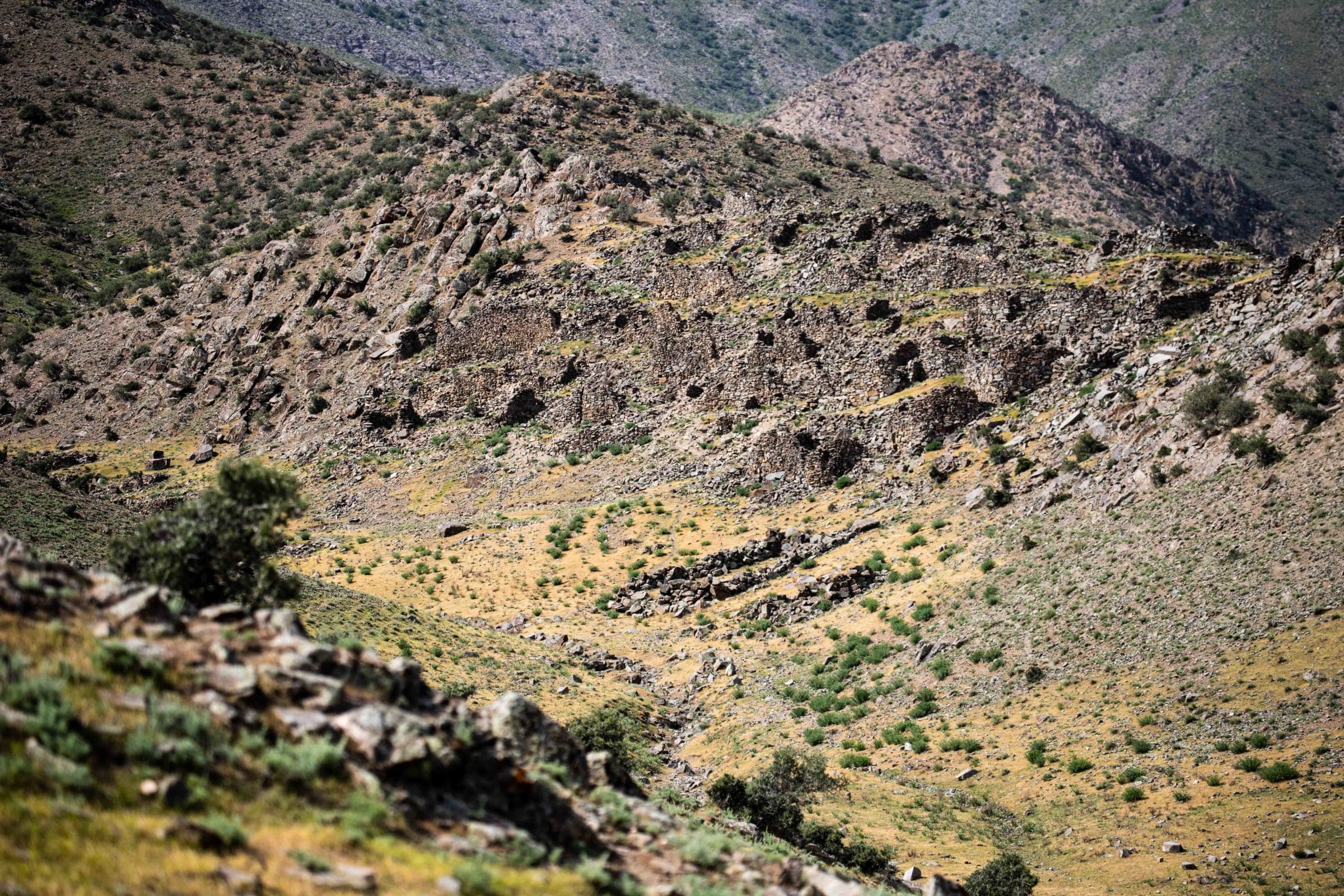
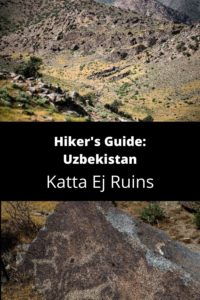
Pingback: Uzbekistan: Nuratau Mountains Hiking Guide - Asia Hikes